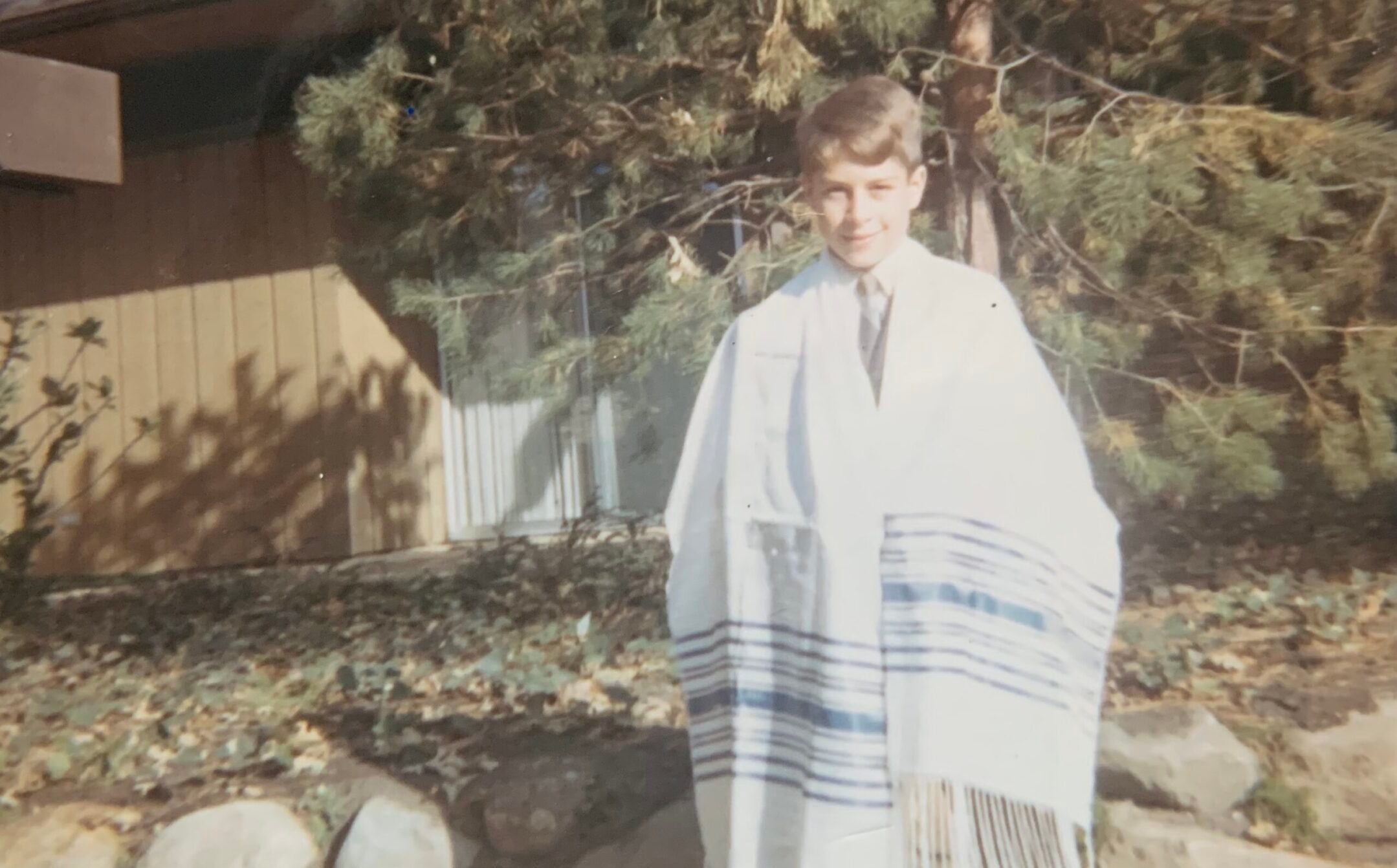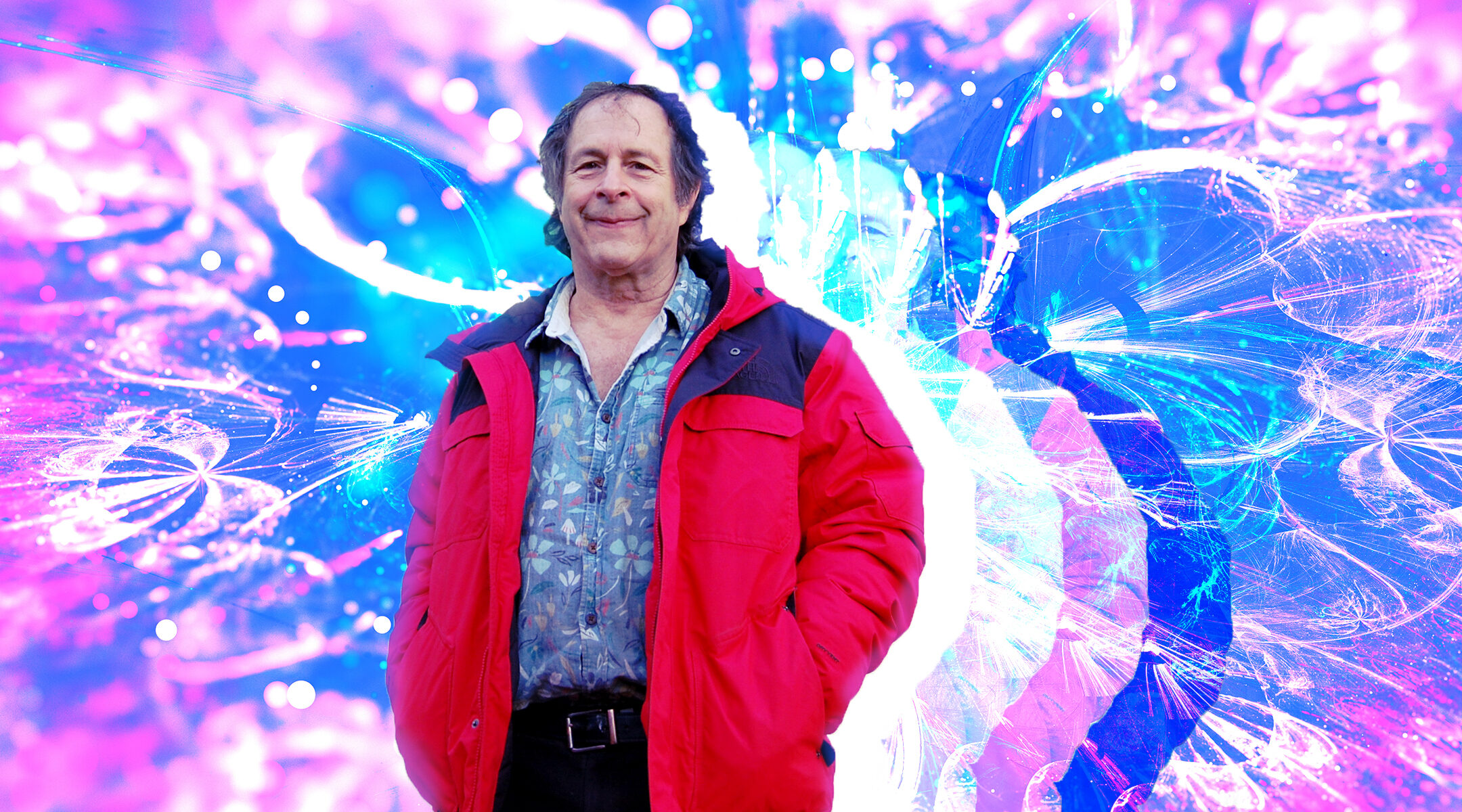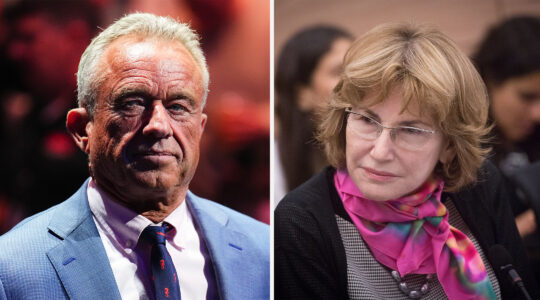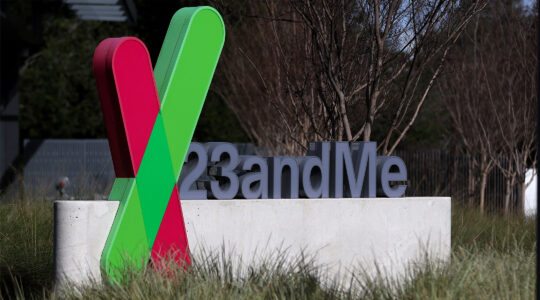BELMONT, Mass. (JTA) — When Rick Doblin was in his early 20s, he had a dream in which he was escorted back in time to witness a Holocaust survivor’s narrow escape from the Nazis.
In his mind, Doblin traveled to Eastern Europe to witness thousands of Jews lined up alongside a mass grave as the gunners open fire, toppling the bodies into the earth. The man spends three days alive underground before emerging and fleeing to the woods, where he survives the war in hiding.
The man then tells Doblin that he survived this horror only to deliver a message that Doblin should devote his life to promoting psychedelics as a cure for human ills and an insurance policy against another Holocaust. Then he expires.
Doblin took the advice to heart. For much of the next four decades, he waged an often frustrating battle to get public health authorities to recognize the value of psychedelics, the perception-shifting compounds popularized in the 1960s that have been a source of both fear and fascination ever since.
“I’ve always felt that the response to the Holocaust is helping people realize our common humanity,” Doblin said. “And that there are many ways to do that, and psychedelic mystical experiences are one of the ways. And so I felt like what I’m doing is to try to prevent another Holocaust and that that’s the deepest motivation.”
In the United States, research on these chemicals has been banned since the 1960s because, in the government’s judgment, they have no recognized medical value and a high potential for abuse. But a growing body of research has shown their efficacy for a range of mental illnesses that have proven resistant to other treatments, including post-traumatic stress disorder, addiction, depression and anxiety. Research underway at Johns Hopkins and New York University is also investigating whether psychedelics can be of use in a wider array of applications, including one study on whether the drugs can induce spiritual experiences among religious clergy.
Doblin has funded some of this research as the founder of the Multidisciplinary Association for Psychedelic Studies, a nonprofit he runs from his home here in suburban Boston. And after years of effort and $100 million raised, he now stands on the cusp of a major victory.
In late October, Doblin received preliminary results from a MAPS-funded phase 3 study of the effects of MDMA — better known as the club drug Ecstasy — on PTSD. Phase 3 trials are typically the final hurdle before the Food and Drug Administration authorizes a drug for public use. Those preliminary results showed MDMA surpassed the FDA’s threshold for statistical significance in treating PTSD.
A formal scientific paper is due early next year and Doblin expects government authorization for prescription use will eventually follow. If it does, it would be the first time the federal government has ever approved a psychedelic to assist in psychotherapy.
“It’s enormously satisfying because it was something that I’ve basically been devoted to for the last 48 years,” Doblin told the Jewish Telegraphic Agency. “It was just ecstatic, you could say.”
Legalization of medical MDMA would represent the culmination of a journey that Doblin often traces back to his bar mitzvah.
Born in Chicago in 1953, Doblin was raised in suburban Skokie, a heavily Jewish area home to a large number of Holocaust survivors. The family later moved to Winnetka, an affluent suburb where they lived in a house designed by an apprentice of Frank Lloyd Wright that had a tree growing in the middle of it. His father, Morton, was a pediatrician and his mother, Arline, a schoolteacher.
“I grew up thinking the whole world was Jewish,” Doblin said. “That was my education. All my parents’ friends were Jewish. The neighbors were all Jewish. We went to temple. You’re a little kid, you think your whole world is the universe.”
Though his family had arrived in America before the war, the Holocaust loomed large in Doblin’s childhood imagination. The irrational hatred, the othering of minorities and the potentially lethal consequences terrified him. Psychedelics offered him a way to turn that fear into something useful.
It also showed him a way to invigorate his inner life in a way that Judaism had failed to, a fact that came home to him in dramatic fashion as he lay in bed the morning after his bar mitzvah and was disappointed to discover nothing had changed. This rite of passage that Jewish boys had undergone for centuries had failed to turn him into a man.

Doblin at his bar mitzvah in 1966. He later said he found his first LSD trip to be a more meaningful rite of passage. (Courtesy of Doblin)
“I just felt like my bar mitzvah was a massively disappointing rite of passage that didn’t engage me at the levels that I needed to be engaged in, that I was hungry for,” he said. “So four years later, when I first started taking LSD, I was like, this is what my bar mitzvah should have done. This is engaging me at the existential, spiritual, emotional levels that really can produce a rite of passage, that this is what I was missing.”
Doblin enrolled at New College in Sarasota, Florida, then an experimental school that he recalls as a four-year bacchanal where students lounged poolside in the nude by day and danced all night under the influence of psychedelics. It took him 16 years to earn his degree.
He first tried LSD in his freshman year. And though the effects were not the full-blown mystical experience many report under the drug’s influence, it was enough to convince him that this chemical synthesized in a Swiss laboratory in 1938 held enormous potential for human transformation.
“In the first, I’d say, 10 LSD trips, what they were doing for me was putting me in touch with my emotions and also helping me think more about kind of this inner energy, and also these intimations of connectivity with the history of evolution, with other people, with nature,” he said.
At the time, a community of psychedelic enthusiasts, driven underground by the government’s ban on LSD research, was quietly developing methods to harness the drug’s power for psychic healing and spiritual growth. Doblin fell in with this crowd, which included Dr. Stanislav Grof, the Czech psychiatrist who had done some of the earliest research with LSD.
As Doblin pursued his ambition of becoming a psychedelic therapist, he undertook various passion projects in Florida, including building a handball court for the college and starting a construction business. In Sarasota, he lived in a fanciful cedar house he built himself as a venue for tripping, including a massage room, a soaring 20-foot ceiling, stained glass panels, floors made of river gravel — but no television.
“TV,” Doblin told the Miami Herald in 1985, “causes brain damage.”

Rabbi Zalman Schachter-Shalomi at Isabella Freedman Jewish Retreat Center in Falls Village, Conn., in 2007. (Daniel Sieradski)
By the mid-1980s, Doblin had become a nationally recognized evangelist for MDMA, then just emerging into the public consciousness as a trendy new club drug. Around that time, at the urging of a top U.N. official with whom he shared the belief that a global spiritual awakening was the key to world peace, Doblin sent an MDMA sample to Rabbi Zalman Schachter-Shalomi, the New Age rabbi and father of the Jewish Renewal movement.
Schachter-Shalomi was famously interested in psychedelics, having done LSD with Timothy Leary in the 1960s and reporting on the experience to his colleagues. He later told The Washington Post, anonymously, that MDMA was a delight akin to the Jewish Sabbath. Doblin wound up visiting Schachter-Shalomi’s Philadelphia synagogue several years later, where he attended Yom Kippur services under the influence of MDMA.
“It was amazing,” Doblin said. “It really opened my heart. MDMA and Yom Kippur go together great.”
Doblin established MAPS in 1986, the year after the Drug Enforcement Administration declared MDMA a Schedule I narcotic, the government’s most restrictive designation. For most of the next three decades, Doblin waged what seemed at times like a hopeless battle to pry open the door to psychedelic research, even earning a doctorate from the Kennedy School of Government at Harvard to get the skills to confront the government bureaucracy.
He found particularly fertile ground for these efforts in Israel, where he has extensive family ties and where decades of war and terrorism had made PTSD an urgent public health concern. (His great-grandparents’ house is a Tel Aviv landmark that is now home to the Heseg Foundation.) MAPS held a conference by the Dead Sea in 1999 in an attempt to push Israeli regulators to approve a study of MDMA for the treatment of PTSD. Among the attendees was Raphael Mechoulam, the legendary Israeli researcher best known for identifying THC, the active ingredient in marijuana.
Israel later became the first country in the world to approve a compassionate use program for MDMA-assisted psychotherapy for PTSD (the United States followed several months later) and provide public support for MDMA research, to the tune of $500,000 approved in February 2019. Israel is now one of just three countries where phase 3 trials are underway. (The United States and Canada are the others.)
Doblin declined to provide specifics about the preliminary results of the phase 3 trials, pending the publication of a formal paper. But preliminary results from phase 2 trials conducted partly in Israel found that out of 107 patients who had suffered from PTSD for an average of nearly 18 years, 68% reported no symptoms one year after MDMA-assisted therapy — an extraordinary rate of success. Those results led the FDA in 2017 to declare MDMA a “breakthrough therapy” and to green-light phase 3 trials, which began the following year.
“I think that what happens with MDMA, because of its pharmacological profile — increased dopamine, serotonin, oxytocin — it creates a sense of well-being,” said Keren Tzarfaty, a therapist who directs Israeli projects for MAPS. “The person is getting regulated and has a very beautiful experience of safety. And from this place, they can look and be with the trauma they have experienced. Then we can help them to process it.”
The phase 3 results are landing in an environment newly receptive to these chemicals long demonized as tools of the counterculture.
At Johns Hopkins, a psychedelic research unit has published over 50 peer-reviewed papers investigating not only the potential to treat disease with psychedelics, but also their effects on healthy subjects. Investors are flocking to a nascent psychedelics industry, anticipating a boom similar to the one that accompanied the rise of medical marijuana a decade ago. The Harvard Divinity School is currently hosting a lecture series about psychedelics and the future of religion. And earlier this month, Oregon became the first state to legalize psilocybin, the active ingredient in psychedelic mushrooms, in therapeutic settings. Michael Pollan’s 2018 book “How to Change Your Mind,” which surveyed this landscape, topped The New York Times best-seller list.
Doblin is naturally thrilled about this shift in the zeitgeist, one he had no small part in creating. But unlike many proponents of research into formerly forbidden drugs, Doblin is candid that his endgame is broad legalization. In his view, the ideal scenario is a regime called licensed legalization in which the right to use psychedelics is akin to driving a car: After taking the drug in a supervised setting, users are granted a license to use that can be taken away in response to misbehavior.
Doblin predicts a system of this nature could be a reality by 2035, after a decade or so in which controlled therapeutic use accustoms the public to the value of these chemicals. In Doblin’s ideal world, the system also would allow parents to make private decisions about giving psychedelics to their children.
“I think that psychedelics are great for rites of passage,” Doblin said. “I think that when you are 12, or 13, you are ready for trying to figure out your place in the world. So I think that we would have psychedelic bar and bat mitzvahs.”
Rabbi Zac Kamenetz, the founder and CEO of Shefa, a new group that advocates for psychedelic therapies in the Jewish community, says that Doblin’s twin objectives of healing the wounds of past atrocities and infusing contemporary life with deeper meaning is an echo of the question Rabbi David Hartman posed in his seminal 1982 essay “Auschwitz or Sinai.”
“Rick might not think of himself as a Jewish theologian, and maybe he’s not,” Kamenetz said. “But he happens to be in a position of recasting the question: Is the Jewish agenda for the next 1,000 years going to be in the pain and trauma of Auschwitz, or are we doing to drop anchor and reach back to the moment that’s always been the moment, the moment of revelation at Sinai? Do we want to reach into something that is transcendent, that exists within the human mind and heart? And that for Rick and for me is made completely available through the use of psychedelic therapy.”
Such ideas, and Doblin’s fearlessness in promoting them, haven’t always endeared him to psychedelic researchers, who have sought to bring along risk-averse institutions by presenting their work as a scientifically sound approach to treating previously intractable illnesses — not as a Trojan horse in the culture wars. To some ears, Doblin’s rhetoric about ending genocide and enlightening humanity through widespread use harkens back to Leary, the Harvard professor whose promiscuous dispensation of LSD led to his firing in 1963.
But Doblin’s success in bringing the fight for MDMA therapy to the cusp of fruition may go a long way toward silencing the naysayers, who have warned that potential blowback to a broad legalization effort would result in another crackdown like the one that squashed Leary’s early research. At least for now, those fears appear unfounded.
“I’m completely vindicated,” Doblin said, breaking into a broad smile.
“Medicalization leads to legalization because you’ve got fear and misinformation and people thinking that one dose, brain damage, functional consequences, addiction, stay away,” he added. “There’s just such decades and decades and decades of propaganda and fear. And how do you overcome that? That’s where medicalization comes in. If you can show that the benefits outweigh the risks, it causes people to start thinking.”
JTA has documented Jewish history in real-time for over a century. Keep our journalism strong by joining us in supporting independent, award-winning reporting.






